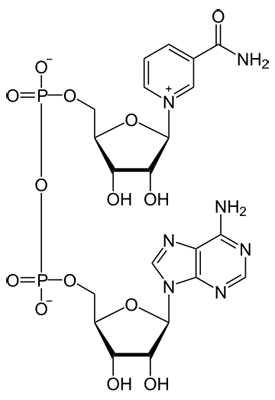- Jmol is a Java based application and an applet for displaying 3D chemical information. Jmol is a molecule viewer for students, educators, and researchers in chemistry, biochemistry, physics, and materials science.
- Jmol is an interactive web browser applet. This is a still image, but you can get an animated display of Jmol abilities by clicking here. (The applet may take some seconds to load.
| Jmol is an open-source viewer for three-dimensional chemical structures, with features for chemicals, crystals, materials and biomolecules. | JSmol is a fully functional implementation of Jmol that does not require Java and runs in any modern (HTML5) web browser. That includes Firefox, Chrome, Opera, MSIE(9+), and Safari on Apple MacOS and iOS (iPad and iPhone). Performance may be a little slower than Java, but it is amazingly fast for JavaScript. |
| Features include reading a variety of file types, including PyMOL session files and output from quantum chemistry programs, file writing (including JPG, PNG, PNGJ (PNG+ZIP), and ZIP formats), and animation of multi-frame files and computed normal modes from quantum programs, surfaces, translucency, full Jmol scripting, and localization in 40+ languages. | |
The recommended way to cite Jmol is:
Jmol runs on a Java platform and therefore functions equally well in a PC or Mac environment. Because Jmol is freeware and an open source program, it can be obtained from many locations. For total functionality in designing a structure to be built on a 3-D printer in the CBM, check the website every September to get the current version of Jmol.
- Jmol: an open-source Java viewer for chemical structures in 3D. http://www.jmol.org/
- JSmol: an open-source HTML5 viewer for chemical structures in 3D. http://wiki.jmol.org/index.php/JSmol
Remember to always use uppercase 'J', uppercase 'S', lowercase 'mol' (explanation).
If you prefer, a list of articles that describe Jmol can be found in the Jmol Literature section.
This is the homepage for the Jmol Community Wiki. Here the community of users can discuss everything that has to do with Jmol and JSmol. You are welcome to browse around and to add new pages, extra information, comments, questions, links to useful examples of Jmol use or Jmol scripting, or whatever else you think is relevant. If you want to participate, you must become a user in the Wiki.
More official, general and static information about Jmol is available in the Jmol web site.(But content there is currently quite outdated)
Pages on this Wiki
Jmol/JSmol Community
|
|
|

Contributors
AngelHerraez, NicolasVervelle, Pimpim, EricMartz, Hansonr, JmolTest
Jmol three-dimensional structure rendering of streptavidin | |
| Developer(s) | Jmol development team |
|---|---|
| Initial release | 2001; 20 years ago |
| Stable release | 14.6.4 (October 15, 2016; 4 years ago) [±] |
| Preview release | 14.5.0 (12 August 2000; 20 years ago) [±] |
| Repository | sourceforge.net/projects/jmol |
| Written in | Java |
| Operating system | Cross-platform |
| Platform | Systems with Java and Web browsers without Java |
| Available in | 16 languages |
Catalan, Chinese, Czech, Danish, Dutch, English, French, German, Hungarian, Indonesian, Italian, Korean, Portuguese, Spanish, Turkish, Ukrainian[1] | |
| Type | Molecular modelling |
| License | LGPL 2.0 |
| Website | www.jmol.org |
Jmol is computer software for molecular modellingchemical structures in 3-dimensions.[2] Jmol returns a 3D representation of a molecule that may be used as a teaching tool,[3] or for research e.g., in chemistry and biochemistry.It is written in the programming language Java, so it can run on the operating systems Windows, macOS, Linux, and Unix, if Java is installed. It is free and open-source software released under a GNU Lesser General Public License (LGPL) version 2.0. A standalone application and a software development kit (SDK) exist that can be integrated into other Java applications, such as Bioclipse and Taverna.
A popular feature is an applet that can be integrated into web pages to display molecules in a variety of ways.For example, molecules can be displayed as ball-and-stick models, space-filling models, ribbon diagrams, etc.[4]Jmol supports a wide range of chemical file formats, including Protein Data Bank (pdb), Crystallographic Information File (cif), MDL Molfile (mol), and Chemical Markup Language (CML). There is also a JavaScript-only (HTML5) version, JSmol, that can be used on computers with no Java.[5]
The Jmol applet, among other abilities, offers an alternative to the Chime plug-in,[3] which is no longer under active development. While Jmol has many features that Chime lacks, it does not claim to reproduce all Chime functions, most notably, the Sculpt mode. Chime requires plug-in installation and Internet Explorer 6.0 or Firefox 2.0 on Microsoft Windows, or Netscape Communicator 4.8 on Mac OS 9. Jmol requires Java installation and operates on a wide variety of platforms. For example, Jmol is fully functional in Mozilla Firefox, Internet Explorer, Opera, Google Chrome, and Safari.
Screenshots[edit]
Crystal structure of an H/ACA box RNP from Pyrococcus furiosus.
Highlighting two salt bridges in hemoglobin tetramer (hemo group as sticks at bottom-right).
A fragment of transcription factor TFIIIA forming three consecutive zinc finger motifs, bound to a stretch of DNA.
Eubacterial 70S Ribosome from Thermus thermophilus.
See also[edit]
- Chemistry Development Kit (CDK)
References[edit]
- ^Jmol translations
- ^Chen, Jim X. (2008), Springer (ed.), Guide to Graphics Software Tools, p. 471, ISBN978-1-84800-900-4
- ^ abHerráez, A (2006), 'Biomolecules in the Computer: Jmol to the Rescue', Biochemistry and Molecular Biology Education, 34 (4): 255–61, doi:10.1002/bmb.2006.494034042644, PMID21638687, S2CID36319720
- ^Herráez, A (2007), Lulu (ed.), How to Use Jmol to Study and Present Molecular Structures, Volume 1, p. 21, ISBN978-1-84799-259-8
- ^'JSmol'. Archived from the original on 2018-01-01. Retrieved 2015-11-02.
External links[edit]
| Wikimedia Commons has media related to Jmol. |
- Official website
- Wiki with listings of websites, wikis, and moodles
- Willighagen, Egon; Howard, Miguel (June 2007). 'Fast and Scriptable Molecular Graphics in Web Browsers without Java3D'. Nature Precedings. doi:10.1038/npre.2007.50.1.
Jmol Website
